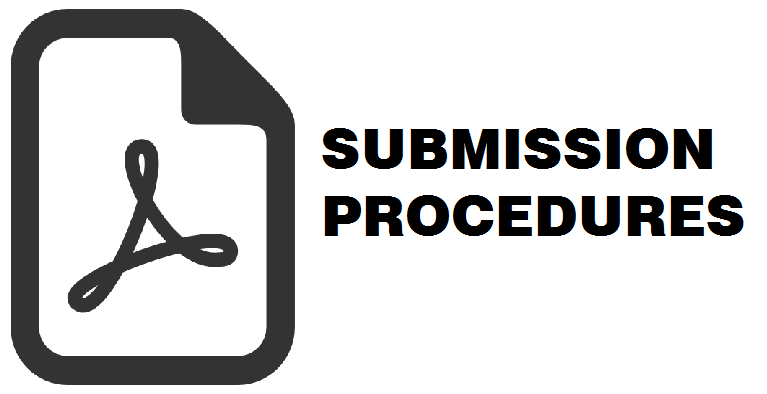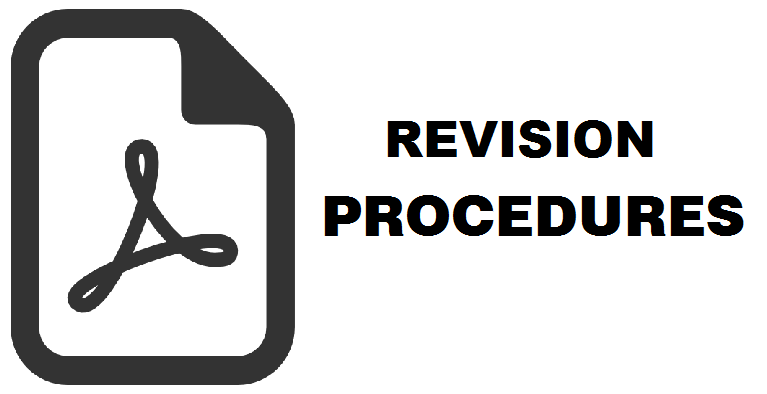Smart Cities and Environmental Sustainability: Evaluating the Nexus in South-West Nigeria
Solomon Dyachia ZAKKA(1*), Oluwagbemiga Paul AGBOOLA(2), Solomon Ayodeji Olatunji(3), Sunday Ukwe-Nya YAKUBU(4)
(1) Department of Urban and Regional Planning, Faculty of Environmental Design and Management, Federal University Oye-Ekiti, Ekiti, Nigeria.
(2) Department of Architecture, Faculty of Architecture and Engineering, Istanbul Gelisim University, Istanbul, 34310, TURKEY.
(3) Department of Urban and Regional Planning, Faculty of Environmental Design and Management, Federal University Oye-Ekiti, Ekiti, Nigeria.
(4) Department of Architecture, Faculty of Environmental Design and Management, Federal University Oye-Ekiti, Ekiti, Nigeria
(*) Corresponding Author
Abstract
Smart cities leverage advanced technologies like Internet of Things (IoT) devices, Artificial Intelligence (AI), and large-scale data analytics for gathering and interpreting data for informed decision-making and improved service delivery. This study focuses on the nexus between smart city development initiatives and environmental sustainability geared towards enhancing a better human settlement in the South-west region, of Nigeria. One of the objectives is to identify and evaluate the factors contributing to the development of smart city initiatives and to evaluate their contributions towards environmental sustainability. An empirical Quantitative approach method comprising Questionnaires was used. A total of three hundred (300) sample Questionnaires were administered and two hundred and eighty-six (286) questionnaires were retrieved and used for analysis. The distribution of Questionnaires cut across professional experts within the built environment and relevant stakeholders. Analysis was done, using the regression technique of the Statistical Package for the Social Sciences (SPSS) software, Version 22. Some of the results included the following: smart economic factors such as Entrepreneurship and Innovation (B = 0.899, sig. = 0.001) Productivity, (B = 0.794, sig. = 0.001) Local and global interconnectivity (B = 0.713, sig. = 0.001). Similarly, the smart mobility factors, have mixed and modal access (B = 0.632, sig. = 0.001); Prioritized clean and non-motorized options (B = 0.604, sig. = 0.001); Integrated ICT (B = 0.656, sig. = 0.001). Generally, the study revealed that smart economy, smart mobility, and smart environment have the most influence on the achievement of environmental sustainability in South-west, Nigeria.
Received: 2024-01-23 Revised: 2024-08-02 Accepted: 2025-01-24 Published: 2025-02-12
Keywords
References
Adelowokan, O. A., Olukayode E. B., Awoyemi O. A., and Adesola B. (2019). “Unemployment, Poverty and Economic Growth in Nigeria.” Journal of Economics and Management 35(1):5–17. doi: 10.22367/jem.2019.35.01.
Agboola, O. P., Zango, M. S., & Zakka, S. D. (2015). “Towards Sustainability of Open Space’s Planning and Management in Nigeria: Roles of Science and Technology.” Jurnal Teknologi, 27(14):51–56.
Agboola, Oluwagbemiga Paul, Badr Saad Alotaibi, Yakubu Aminu Dodo, Mohammed Awad Abuhussain, and Maher Abuhussain. (2023). “Built Environment Transformation in Nigeria: The Effects of a Regenerative Framework.” Journal of Asian Architecture and Building Engineering 00(00):1–24. doi: 10.1080/13467581.2023.2238045.
Agboola, Oluwagbemiga Paul, Samuel Moveh, Khalid Yahya, Hani Attar, and Ayman Amer. (2022). “The Role of Smart Environment Initiatives on Environmental Degradation: Consolidating the Resilient Built Landscape.” 1st International Engineering Conference on Electrical, Energy, and Artificial Intelligence, EICEEAI 2022 (September 2023):1–5. doi: 10.1109/EICEEAI56378.2022.10050481.
Agboola, O. P., Zakka, S. D., & Olatunji, S. A. (2024). Experts profiling on a healthier built environment: Lowering the threat of climate change. International Journal of Human Capital in Urban Management, 9(1).
Ahad, Mohd Abdul, Sara Paiva, Gautami Tripathi, and Noushaba Feroz. (2020). “Enabling Technologies and Sustainable Smart Cities.” Sustainable Cities and Society 61(March):102301. doi: 10.1016/j.scs.2020.102301.
Akinola, Adedotun O., Akunnaya P. Opoko, Eziyi O. Ibem, Hilary I. Okagbue, and Adedeji O. Afolabi. (2020). “Climate Change Adaptation and Mitigation Strategies in Lagos, Nigeria: Built Environment Professionals’ Perspective.” International Journal of Engineering and Advanced Technology 9(3):1273–82. doi: 10.35940/ijeat.b2630.029320.
Alberti, Marina. (2016). Cities That Think like Planets: Complexity, Resilience, and Innovation in Hybrid Ecosystems.
Albino, Vito, Umberto Berardi, and Rosa Maria Dangelico. (2015). “Smart Cities: Definitions, Dimensions, Performance, and Initiatives.” Journal of Urban Technology 22(1):3–21. doi: 10.1080/10630732.2014.942092.
Anthopoulos, Leonidas G., and Theologis Tougountzoglou. (2014). A Viability Model for Digital Cities : Economic and Acceptability Factors A Viability Model for Digital Cities : Economic and Acceptability Factors A Viability Model for Digital Cities : Economic and Acceptability Factors A Viability Model for Digital Cit.
Backhouse, Judy. (2015). “Smart City Agendas of African Cities.” Pp. 7–8 in African Conference on Information Systems and Technology (ACIST).
Bamwesigye, Dastan, and Petra Hlavackova. (2019). “Analysis of Sustainable Transport for Smart Cities.” Sustainability (Switzerland) 11(7):2140. doi: 10.3390/SU11072140.
Berkes, F. & Ross, H. (2013). “Community Resilience: Toward an Integrated Approach.” Society & Natural Resources, 26(1):5-20.
Bibri, Simon Elias. (2018). “The IoT for Smart Sustainable Cities of the Future: An Analytical Framework for Sensor-Based Big Data Applications for Environmental Sustainability.” Sustainable Cities and Society 38:230–53. doi: 10.1016/j.scs.2017.12.034.
Bibri, Simon Elias, Alahi Alexandre, Ayyoob Sharifi, and John Krogstie. (2023). “Environmentally Sustainable Smart Cities and Their Converging AI, IoT, and Big Data Technologies and Solutions: An Integrated Approach to an Extensive Literature Review.” Energy Informatics 6(1):9. doi: 10.1186/s42162-023-00259-2.
Calautit, John Kaiser, and Hassam Nasarullah Chaudhry. (2022). “Sustainable Buildings: Heating, Ventilation, and Air-Conditioning.” 1–5.
Caragliu, Andrea, Chiara Del Bo, and Peter Nijkamp. (2011). “Smart Cities in Europe.” in 3rd Central European Conference in Regional Science – CERS,.
Creswell, J. W., & Guetterman, T. C. (2012). Educational Research: Planning, Conducting, and Evaluating Quantitative and Qualitative Research, Boston, MA: PearsonEducation. 4th ed.
Cronbach, Lee J., and Richard J. Shavelson. (2004). “My Current Thoughts on Coefficient Alpha and Successor Procedures CSE Report 643 Editorial Assistance by December 2004 Center for the Study of Evaluation ( CSE ) National Center for Research on Evaluation , Standards , and Student Testing ( CRESST ) Gradu.” Educational and Psychological Measurement 64(3):391–418.
Cugurullo, Federico. (2018). “The Origin of the Smart City Imaginary : From the Dawn of Modernity to the Eclipse of Reason.” in Routledge.
EUROSTAT. (2001). Environmental Sustainability Indicators in Urban Areas: An Italian Experience.: National Statistical Institute of Italy.
Freire, Maria Emilia. (2013). Urbanization and Green Growth in. Vol. 1.
Gandy, M. (2006). Planning, anti-planning and the infrastructure crisis facing metropolitan Lagos. Urban studies, 43(2), 371-396.
Giffinger, R., Fertner, C., Kramar, H. and Meijers, E. (2007). “Smart Cities: Ranking of European Medium-Sized Cities. Centre of Regional Science (SRF). Vienna University of Technology, Vienna, Austria.” Retrieved February 14, 2023 (http://www.smart-cities.eu/download/smart_cities_final_report.pdf).
Grossi, G., & Pianezzi, D. (2017). “Smart Cities: Utopia or Neoliberal Ideology?” Cities 69:79–85.
Hair, J., Hollingsworth, C. L., Randolph, A. B., & Chong, A. Y. L. (2017). An updated and expanded assessment of PLS-SEM in information systems research. Industrial management & data systems, 117(3), 442-458.
Hamamurad, Qasim Hamakhurshid, Normal Mat Jusoh, and Uznir Ujang. (2022). “A Literature Review of Smart City : Concept and Framework.” Journal of Advanced Geospatial Science & Technology 2(1):92–111.
Hollands, Robert G. (2020). “Will the Real Smart City Please Stand Up?” Routledge 179–99. doi: 10.1080/13604810802479126.
Homepage Smart City. (2019). “Ministry of Housing and Urban Affairs, Government of India.” Retrieved August 25, 2022 (http://smartcities.gov.in/writereaddata/SmartCityGuidelines.pdf).
Hou, Lu, Shaohang Zhao, Xiong Xiong, Kan Zheng, and Senior Member. (2016). “Internet of Things Cloud: Architecture and Implementation. IEEE Communications Magazine, 54(12),.” 32–39.
Ismagilova, Elvira, Laurie Hughes, Yogesh K. Dwivedi, and K. Ravi Raman. (2019). “Smart Cities: Advances in Research—An Information Systems Perspective.” International Journal of Information Management 47:88–100. doi: 10.1016/j.ijinfomgt.2019.01.004.
Jeyasheeli P. G. and J. V. J. Selva. (2017). “‘An IOT Design for Smart Lighting in Green Buildings Based on Environmental Factors,.’” Pp. 1–5 in 4th International Conference on Advanced Computing and Communication Systems (ICACCS), Coimbatore, India,.
Kaluarachchi, Yamuna. (2021). “Potential Advantages in Combining Smart and Green Infrastructure over Silo Approaches for Future Cities.” Frontiers of Engineering Management 8(1):98–108. doi: 10.1007/s42524-020-0136-y.
Kaluarachchi, Yamuna. (2022). “Implementing Data-Driven Smart City Applications for Future Cities.” MDPI 5:455–74.
Kline, R. B. (2015). The mediation myth. Basic and Applied Social Psychology, 37(4), 202-213.
Komninos, N. (2016). Intelligent Cities and the Evolution toward Technology-Enhanced, Global and User-Driven Territorial Systems of Innovation. Handbook on the Geography of Innovation,.
Kumar, Naveen, and Arora Isha. (2019). “United Nations Sustainable Development Goals 2030 and Environmental Sustainability : Race against Time.” Environmental Sustainability 2(4):339–42. doi: 10.1007/s42398-019-00092-y.
Mahvi, Amir Hossein, Ali Akbar Roodbari, Ramin Nabizadeh Nodehi, Simin Nasseri, Mohammad Hadil Dehghani, and Mahmood Alimohammadi. (2012). “Improvement of Landfill Leachate Biodegradability with Ultrasonic Process.” PLoS ONE 7(7):3–9. doi: 10.1371/journal.pone.0027571.
Marsal-Llacuna, M. L., Colomer-Llinàs, J., & Meléndez-Frigola, J. (2015). “Lessons in Urban Monitoring Taken from Sustainable and Livable Cities to Better Address the Smart Cities Initiative.” Technological Forecasting and Social Change, 90:611–22.
Mboup, G., & Oyelaran-Oyeyinka, B. (2019). Relevance of Smart Economy in Smart Cities in Africa. Springer Singapore.
Moldan, Bedřich, Svatava Janoušková, and Tomáš Hák. (2012). “How to Understand and Measure Environmental Sustainability: Indicators and Targets.” Ecological Indicators 17(1):4–13. doi: 10.1016/j.ecolind.2011.04.033.
Moser, C. A., & Kalton, G. (2017). Survey methods in social investigation. Routledge.
Neirotti, Paolo, Alberto De Marco, Anna Corinna Cagliano, Giulio Mangano, and Francesco Scorrano. (2014). Current Trends in Smart City Initiatives: Some Stylised Facts. Vol. 38.
Njar, B. I., & Enagu, D. A. (2019). “Development and Environmental Sustainability in Nigeria: An African Perspective. GNOSI:” An Interdisciplinary Journal of Human Theory and Praxis, 2(1):37–47.
Odendaal, N. (2003). “Information and Communication Technology and Local Governance: Understanding the Difference between Cities in Developed and Emerging Economies.” Computers, Environment and Urban Systems, 27(6):585-607.
Offiong, O. J., & Dibie, R. (2014). Environmental Policy and Issues in Nigeria. In Comparative Perspectives on Environmental Policies and Issues. First Edit. Routledge.
Ogochukwu, C. G., Chioma, J. N. A., Ogochukwu, O. F., Chukwudi, E. C., & Ogorchukwu, I. M. (2022). Rapid spatial growth of cities and its planning implications for developing countries: a case study of Abuja, Nigeria. The Indonesian Journal of Geography, 54(2), 313-320.
Olumuyiwa, I. O., & Saheed, O. O. (2014). Assessment of weather variability impact on Cassava Yield in South Western Nigeria. LAUTECH Journal of Engineering and Technology, 8(2), 169-175.
Okewale, R. A., & ATOBATELE, A. J. (2022). Smart Cities and Socio-Economic Development in Nigeria: Evidences from some selected Countries. Annals of Spiru Haret University. Economic Series, 22(2).
Pemer, M. (2001). “Developing a Sustainable Compact City in Stockholm, Sweden.” in International Habitat Conference.
Pickett, S. T., McGrath, B., Cadenasso, M. L., & Felson, A. J. (2014). “Ecological Resilience and Resilient Cities.” Building Research & Information, 42(2):143–57.
Porru, S., Misso, F. E., Pani, F. E., & Repetto, C. (2020). “Smart Mobility and Public Transport: Opportunities and Challenges in Rural and Urban Areas.” Journal of Traffic and Transportation Engineering 7(1):88-97.
Rachmawati, R., Mei, E. T. W., Haryono, E., Reinhart, H., Ghiffari, R. A., Rohmah, A. A., ... & Petre, A. A. (2023). Smart City Approaches to Public Spaces and Services during and after COVID-19: Case Studies in Four Capital Cities. Indonesian Journal of Geography, 55(3), 385-396.
Reckien, Diana, Monica Salvia, Oliver Heidrich, Jon Marco Church, Filomena Pietrapertosa, Sonia De Gregorio-Hurtado, Valentina D’Alonzo, Aoife Foley, Sofia G. Simoes, Eliška Krkoška Lorencová, Hans Orru, Kati Orru, Anja Wejs, Johannes Flacke, Marta Olazabal, Davide Geneletti, Efrén Feliu, Sergiu Vasilie, Cristiana Nador, Anna Krook-Riekkola, Marko Matosović, Paris A. Fokaides, Byron I. Ioannou, Alexandros Flamos, Niki Artemis Spyridaki, Mario V. Balzan, Orsolya Fülöp, Ivan Paspaldzhiev, Stelios Grafakos, and Richard Dawson. (2018). “How Are Cities Planning to Respond to Climate Change? Assessment of Local Climate Plans from 885 Cities in the EU-28.” Journal of Cleaner Production 191:207–19. doi: 10.1016/j.jclepro.2018.03.220.
Rezvani, S., Ghaffarianhoseini, A., & Hassan, N. (2017). Why Do People Tend to Walk in Certain Places? A Review of Urban Social and Physical Attributes Affecting Pedestrian’s Sensory Experience.
Santo, Katia Gregio, Eduardo Kanashiro, Silvio Giuseppe Di Santo, and Marco Antonio Saidel. (2015). “A Review on Smart Grids and Experiences in Brazil.” Renewable and Sustainable Energy Reviews 52:1072–82. doi: 10.1016/j.rser.2015.07.182.
Smeets-Kristkova, Zuzana, Achterbosch Thom, and Marijke Kuiper. (2019). “Healthy Diets and Reduced Land Pressure: Towards a Double Gain for Future Food Systems in Nigeria Zuzana.” P. 35 in Towards Sustainable Global Food Systems.
Tavakol, M., & Dennick, R. (2011). “Making Sense of Cronbach’s Alpha.” International Journal of Medical Education, 2(53).
Twigg, John. (2007). “Characteristics of a Disaster-Resilient Community (Version 1 for Field Testing).” 1(August).
UN. (2007). United Nations Indicators of Sustainable Development: Guidelines and Methodologies. In Third Edition (Ed.). New York.
Vainio, Teija, and Iina Sankala. (2022). “Exploring the Balance between Smartness and Sustainability in Finnish Smart City Initiatives during the 2010s.” Current Urban Studies 10(03):405–25. doi: 10.4236/cus.2022.103024.
Vesco, A. (Ed. ). (2015). Handbook of Research on Social, Economic, and Environmental Sustainability in the Development of Smart Cities. IGI Global.
Voordijk, Hans, and Steven Dorrestijn. (2021). “Smart City Technologies and Figures of Technical Mediation.” Urban Research and Practice 14(1):1–26. doi: 10.1080/17535069.2019.1634141.
World Bank. (2012). Information, Communication Technologies, & InfoDev (Program). (2012). Information and Communications for Development 2012: Maximizing Mobile.
Zakka, S. D. (2018). “Impacts of Land Use Pattern on Transportation and Carbon Emission in Kaduna City, Nigeria.” Unpublished Ph. D Thesis University Technology Malaysia.
Article Metrics
Refbacks
- There are currently no refbacks.
Copyright (c) 2025 Authors and Indonesian Journal of Geography

This work is licensed under a Creative Commons Attribution-NonCommercial 4.0 International License.
Accredited Journal, Based on Decree of the Minister of Research, Technology and Higher Education, Republic of Indonesia Number 225/E/KPT/2022, Vol 54 No 1 the Year 2022 - Vol 58 No 2 the Year 2026 (accreditation certificate download)
ISSN 2354-9114 (online), ISSN 0024-9521 (print)









